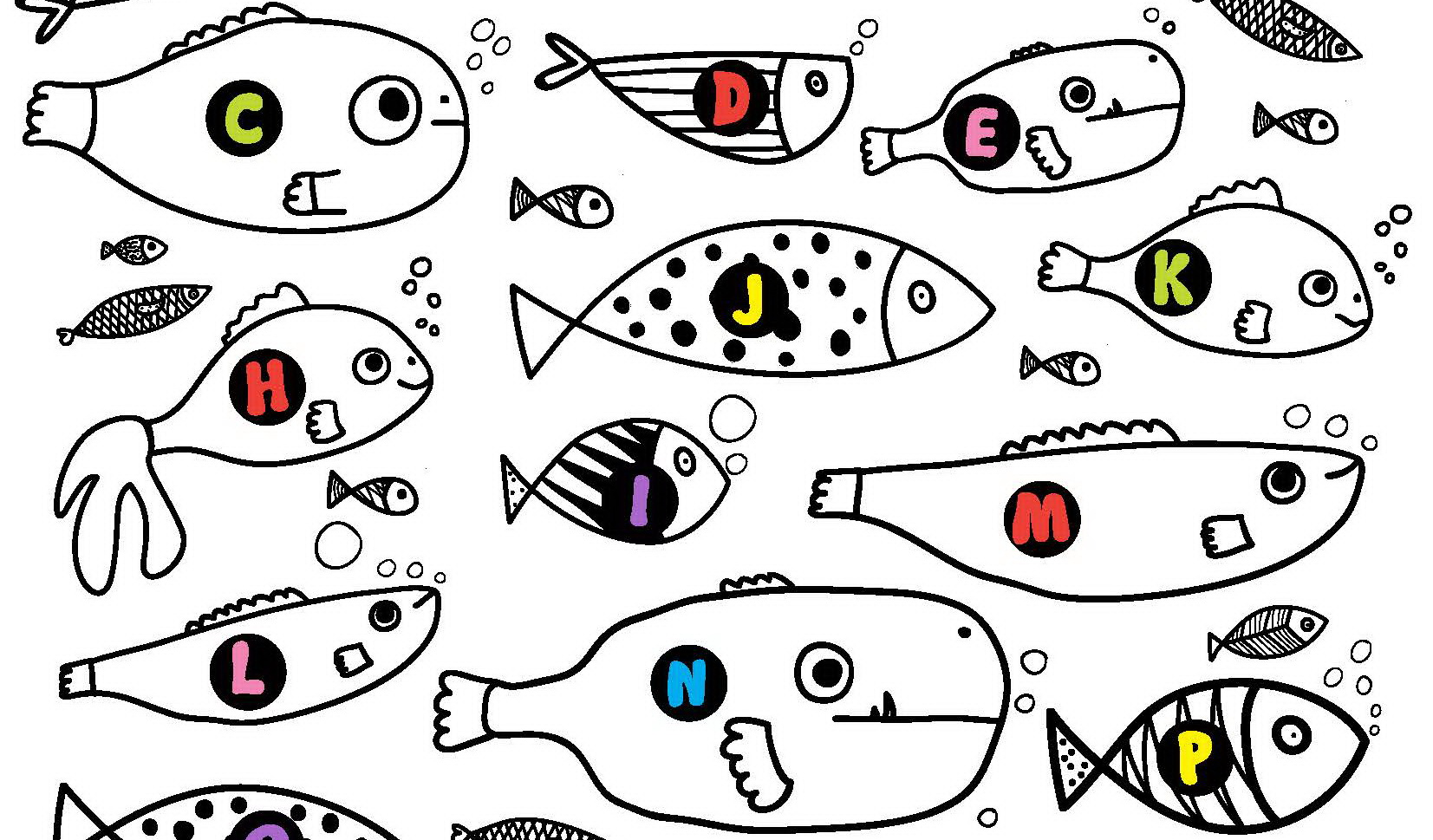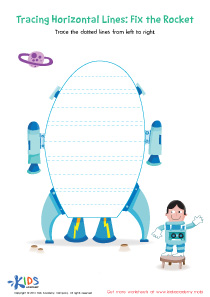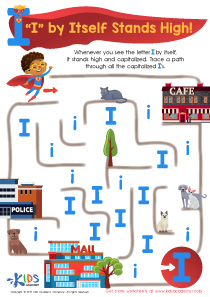Word identification Normal Alphabet Worksheets for Ages 5-8
6 filtered results
-
From - To
Boost your child's reading skills with our engaging Word Identification Normal Alphabet Worksheets designed for ages 5-8. These printable worksheets provide a fun and interactive way for young learners to identify and recognize words, enhancing their vocabulary and comprehension. Each activity encourages children to practice letter sounds and sight words through colorful illustrations and relatable themes, making learning enjoyable. Perfect for at-home practice or in-class activities, our worksheets cater to various learning styles. Help your child build a strong foundation in literacy and boost their confidence as they embark on the exciting journey of reading. Start downloading today!
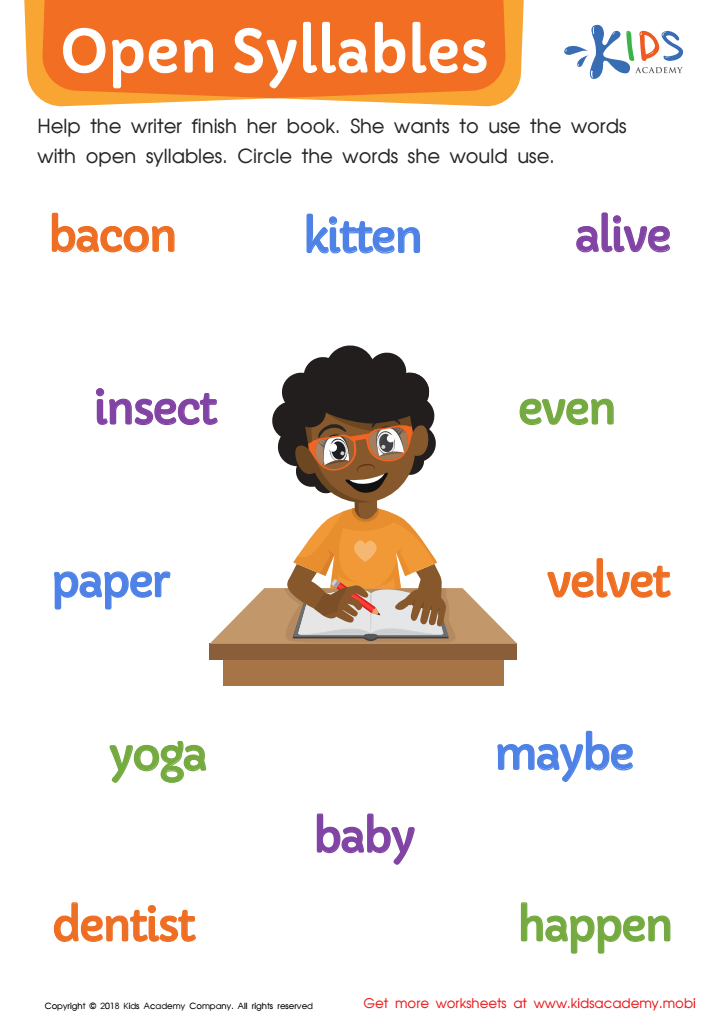

Open Syllables Worksheet
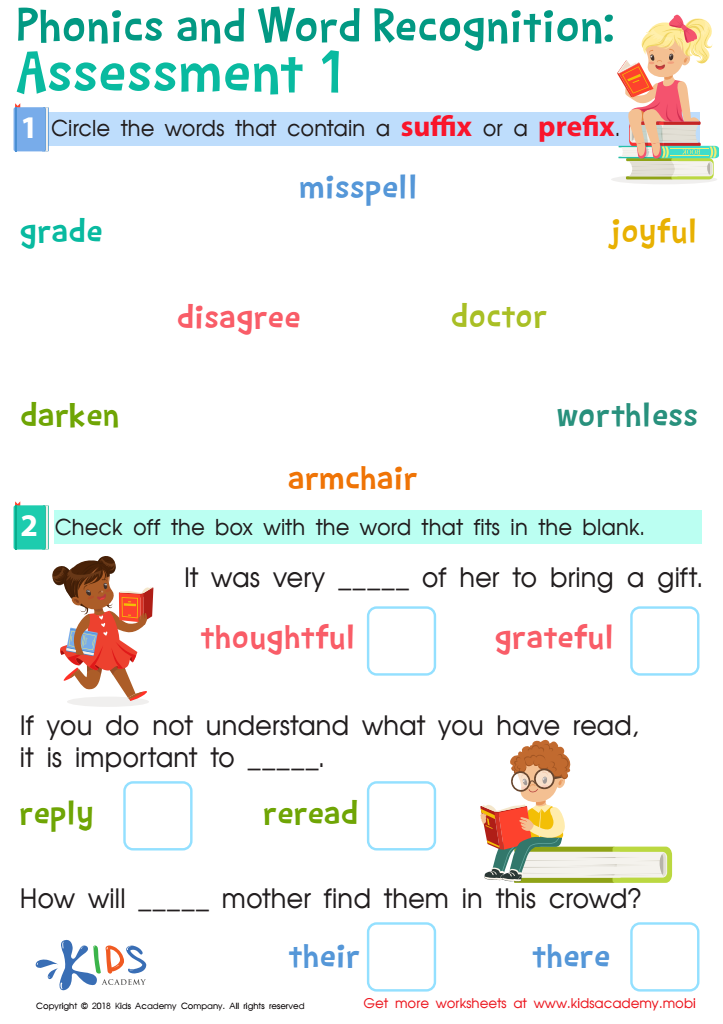

Phonics and Word Recognition: Assessment 1 Worksheet
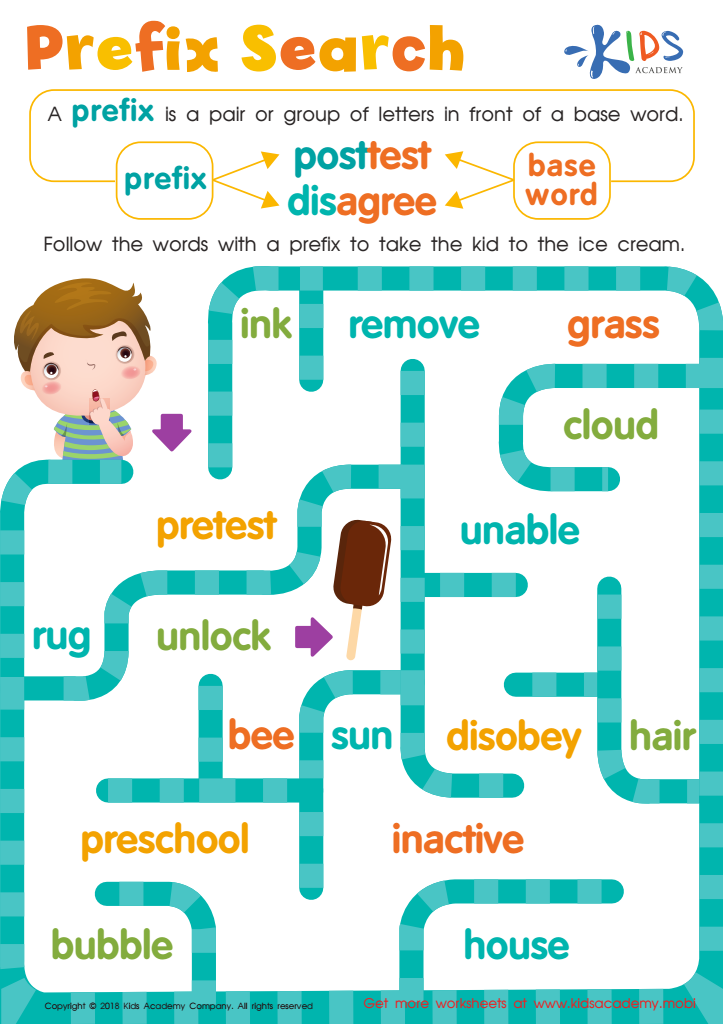

Reading: Prefix Search Worksheet
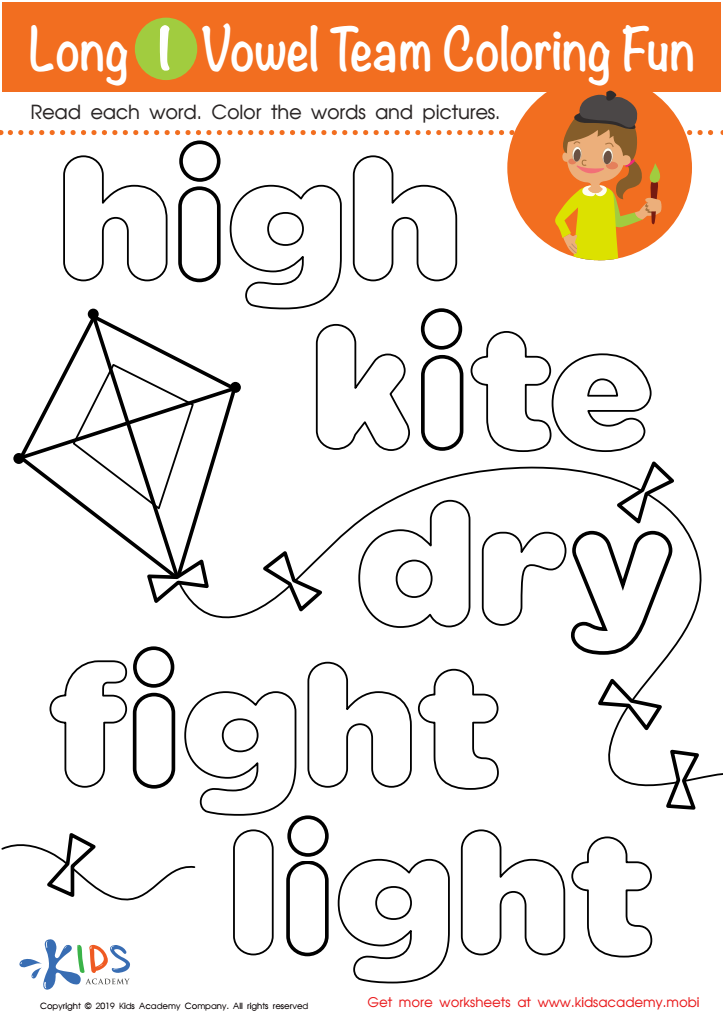

Long I Vowel Team Coloring Worksheet
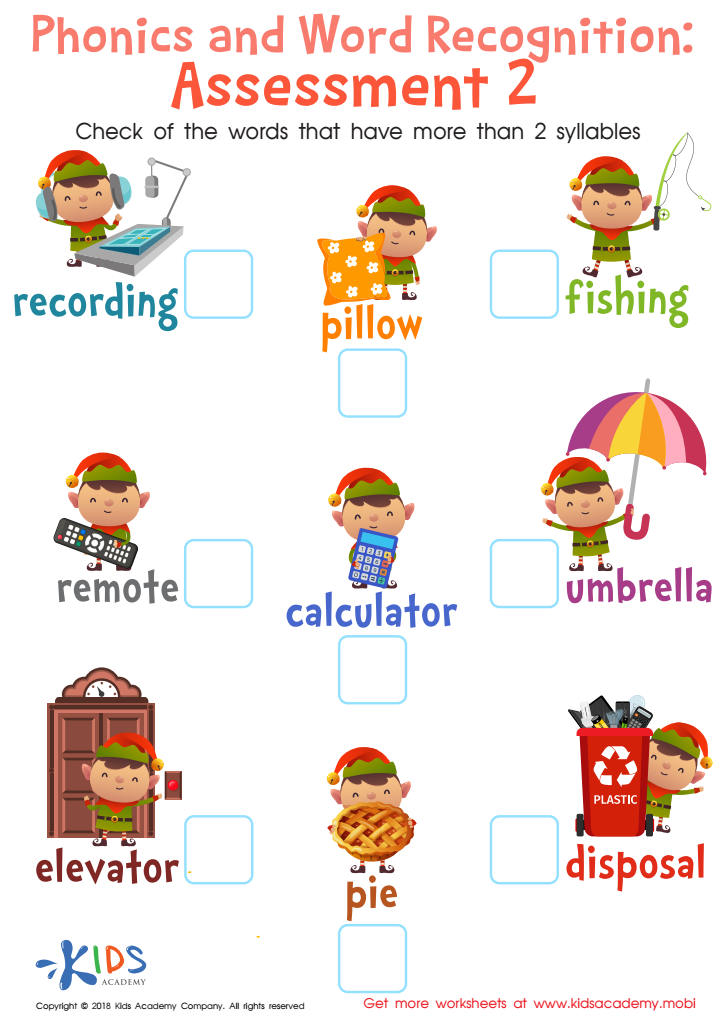

Phonics and Word Recognition: Assessment 2 Worksheet
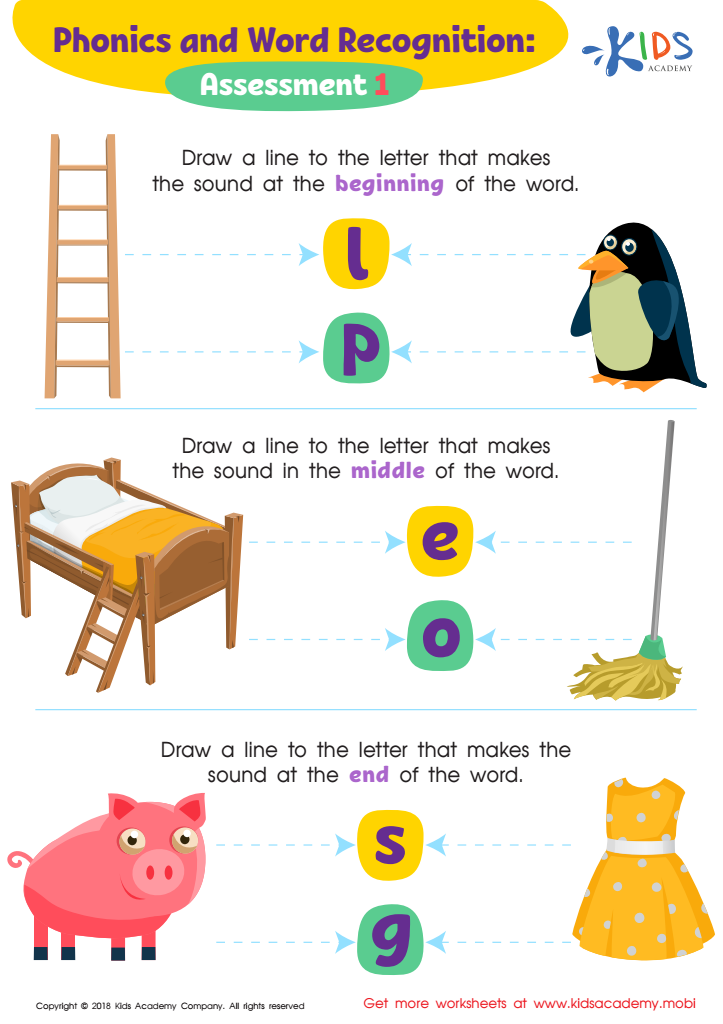

Phonics and Word Recognition: Assessment 1 ELA Worksheet
Word identification is a crucial skill for children aged 5-8, as it forms the foundation for reading and overall literacy development. For parents and teachers, understanding this skill is essential for several reasons. Firstly, word identification aids in comprehension. When children can quickly and accurately recognize words, they can focus more on understanding the meaning of texts rather than deciphering each word, leading to improved learning outcomes.
Moreover, early mastery of word identification contributes to increased confidence in young learners. When children can recognize familiar words, they are more likely to engage in reading activities willingly, fostering a love for literature. This enjoyment directly impacts their academic performance and lifelong learning habits.
Furthermore, a solid grasp of word identification supports vocabulary development. As children begin to recognize words, they are exposed to new concepts and ideas, which serves to expand their language skills.
Additionally, for teachers and parents, understanding the importance of word identification can inform instructional strategies and home activities. Tailoring exercises and resources to enhance this skill at a young age ensures that children build a strong reading foundation essential for their future educational endeavors. Ultimately, prioritizing word identification fosters literacy, confidence, and a lifelonglove for learning.
 Assign to My Students
Assign to My Students


